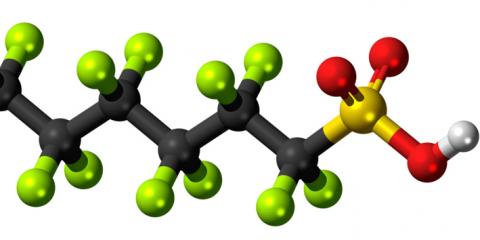Reaction to study associating prenatal exposure to everyday chemicals with childhood liver disease
Analysis of 45 commonly used chemicals in more than 1,000 pregnant women in six countries, including Spain, finds a link between increased exposure to these compounds and non-alcoholic fatty liver disease in children, according to research published in JAMA Network Open. It is the first comprehensive study of prenatal exposure to these chemicals in combination, as they occur in real life.

Marieta Fernández - químicos prenatal
Mariana F. Fernández Cabrera
Professor at the University of Granada and researcher at the Cybernetics Centre for Epidemiology and Public Health (CIBERESP) and the Institute for Biomedical Research of Granada (ibs.GRANADA)
Mount Sinai researchers find that prenatal exposure to multiple chemical compounds (endocrine disruptors) increases the risk of non-alcoholic fatty liver disease during childhood. This condition is a rapidly growing problem in children, which can lead to severe chronic liver disease and liver cancer in adulthood (6-10% of the general paediatric population and 34% of children with obesity).
We are all exposed daily to mixtures of chemicals capable of altering the hormonal system and interfering with the hormonal and metabolic processes of individuals through residues in food, water and/or the use of many consumer products. When this exposure occurs at specific times, such as organogenesis during prenatal development (pregnancy), it can lead to deleterious effects that are generally not evident until later in life (childhood, puberty or adulthood). That's what the results of the paper in JAMA Network Open indicate.
The researchers used statistical modelling to analyse the relationship between the mixtures of pollutants to which mothers were exposed during pregnancy and the measurement of a biomarker, cytokeratin-18" as a marker of disease in eight-year-old children.
One of the particularities of this work is that it considers combined exposure to multiple environmental pollutants, a real situation in the general population (exposome). The authors measured 45 chemicals in more than 1,000 pregnant women (recruited between 2003 and 2010). Among the substances analysed they measured several compounds both persistent (in blood) and non-persistent (in urine): PCBs (polychlorinated biphenyls), pesticides, plastic components (phenols and phthalates), parabens (cosmetics), perfluorinated compounds (PFAS), polybrominated diphenyls (PBDE)-flame retardants and toxic metals.
Until now, several experimental studies have shown that exposure to these chemicals individually can cause liver damage and non-alcoholic fatty liver disease; however, the effects of mixtures in the human population have not been studied. This work thus advances our knowledge of the environmental causes of disease and how the environment affects our health.
This work is part of the Human Early-Life Exposome study, a collaborative network of six prospective birth cohort studies from six European countries: France, Greece, Lithuania, Norway, Spain and Great Britain. Limitations include the inability to perform a liver biopsy, considered the gold standard for establishing a causal relationship with non-alcoholic fatty liver disease, due to risk and ethical limitations due to the age of the children, and the statistical approximation of exposure to the mixtures, without considering exposure routes and mechanisms of action of individual contaminants in the mixture.
Further research is needed to improve the analysis of risk associated with exposure to mixtures of environmental contaminants, developing novel approaches and assessment strategies in order to better account for actual environmental exposures.
These findings allow, however, to establish effective strategies to prevent exposure to these pollutants during the early stages of life, as well as to improve regulatory measures to reduce human exposure to these environmental pollutants.
Vishal Midya et al.
- Research article
- Observational study
- People



